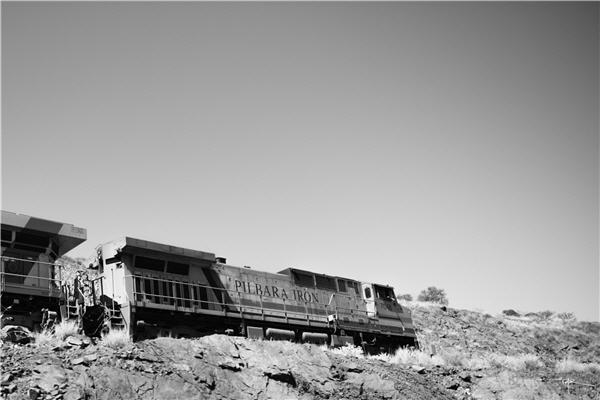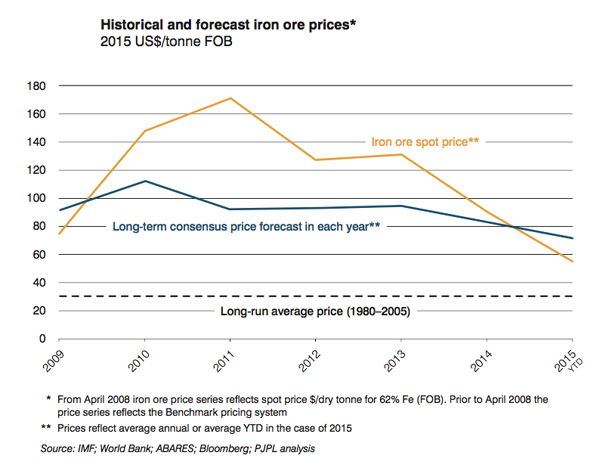
Pilbara strong
The benchmark 62% Fe import price including freight and insurance at the Chinese port of Tianjin added $1.60 or 3.3% to $49.90 a tonne according to data provided by The SteelIndex, adding to the biggest one day jump on record achieved on Thursday.
It’s been a wild ride for iron ore markets – the gains comes after a precipitous drop on Wednesday that saw the spot price reach an all-time low of $44.10 a tonne in a knee-jerk reaction to the chaos on Chinese equity markets.
After almost halving in 2014, the price of iron ore is still down nearly 30% this year from opening levels above $70 a tonne.
A wild ride
It’s easy to forget just how much today’s 1.3 billion tonnes seaborne trade has changed in just the last decade.
The SteelIndex, a unit of Platts, first started tracking the spot price only in November 2009. Before the emergence of quarterly contract pricing and eventually a spot price, the seaborne trade was controlled by the Big 3 producers – Vale, Rio Tinto and BHP Billiton – which set prices during secretive negotiations with Japanese steelmakers and signed annual contracts.

Source: Port Jackson Partners
After months of tough – often acrimonious – benchmark negotiations, the 2005 price was hiked a whopping 71.5%, marking the start of a supercycle and the beginning of the end of the old pricing system. But a tonne of ore was still only $28.11.

Source: Port Jackson Partners
During 2008 negotiations the contract price was upped 68%, but the majors continued to lose out on billions under annual contract pricing. Growing Chinese port stockpiles saw action in the industry shift to mills and traders, ushering in the era of rapidly rising and volatile prices.
In a push by BHP Billiton CEO Marius Kloppers (against the wishes of his larger competitors), 2009 saw the collapse of the old benchmark system and at the same time a move away from a free-on-board pricing system to one where miners accept freight costs.
The spot price scaled $100 for the first time in November 2009 and on February 16 2011 reached an all-time high of $191.90 a tonne.
While a price near $200 a tonne is out of whack as the graph shows, at today’s prices iron ore is cheap compared to bellwether metals copper and gold.
Image by Tom Rodgers